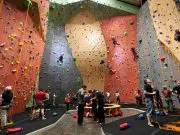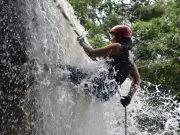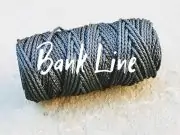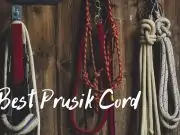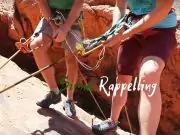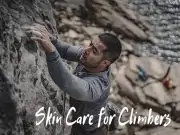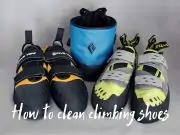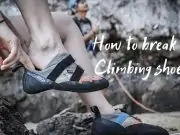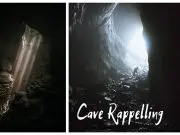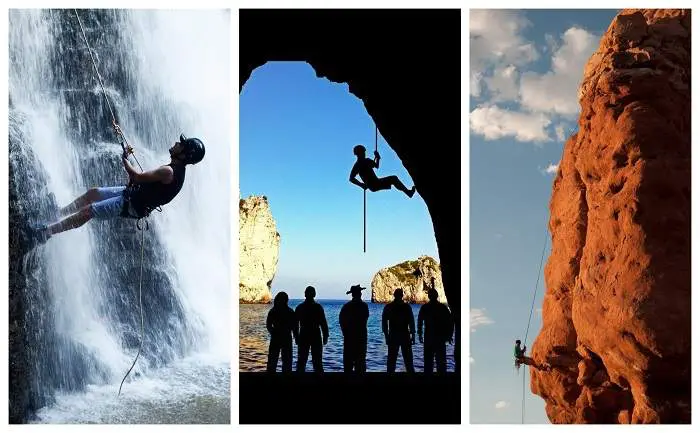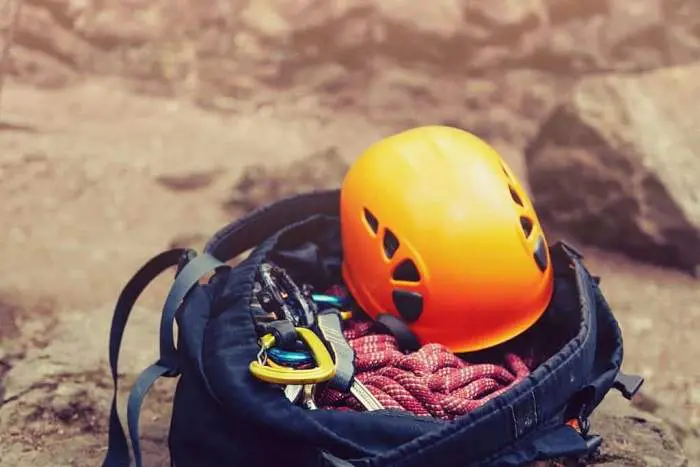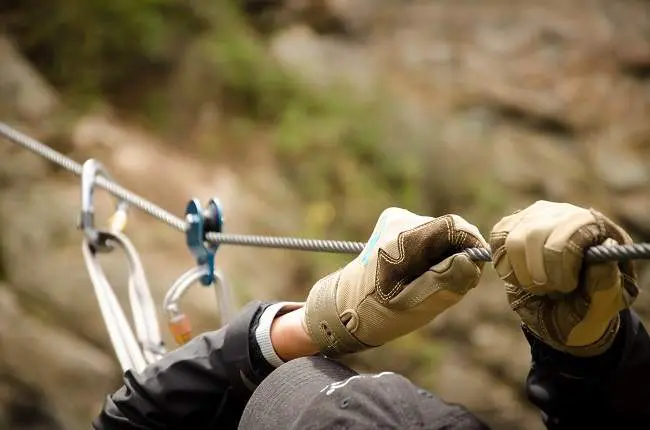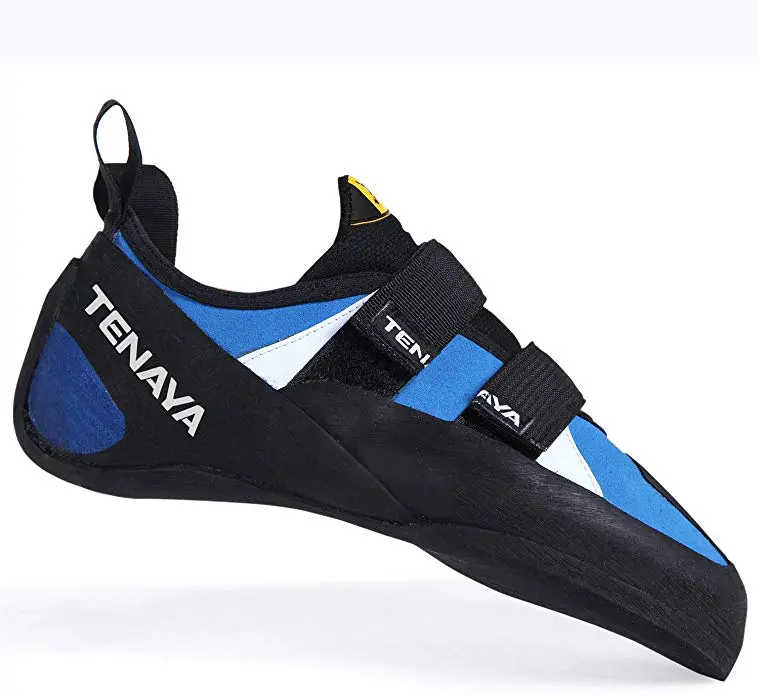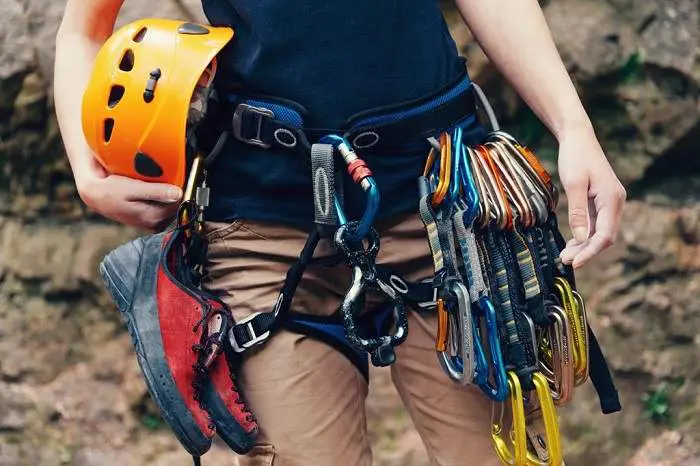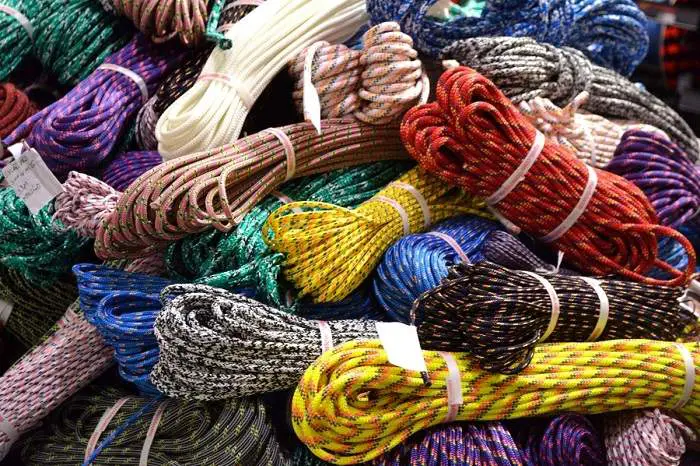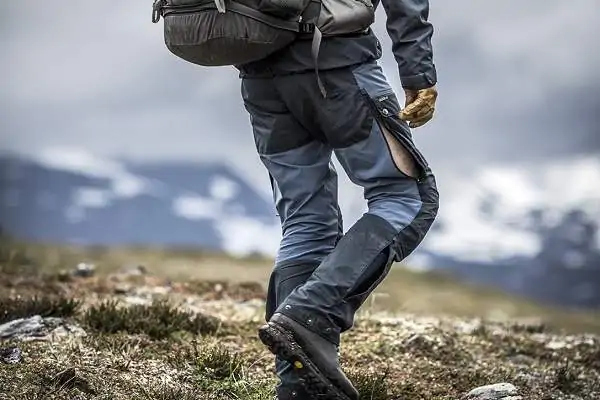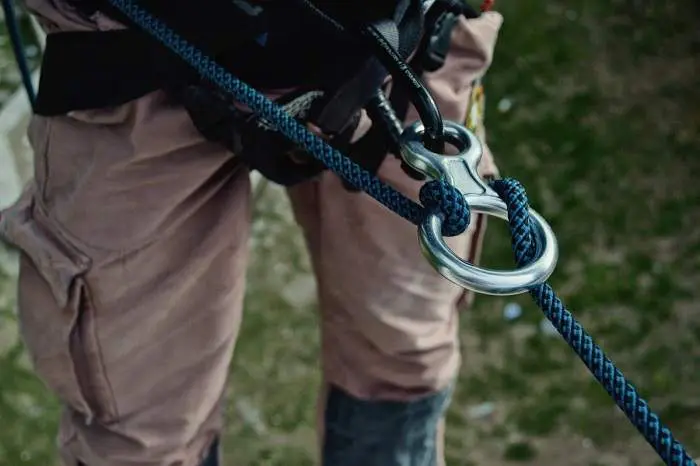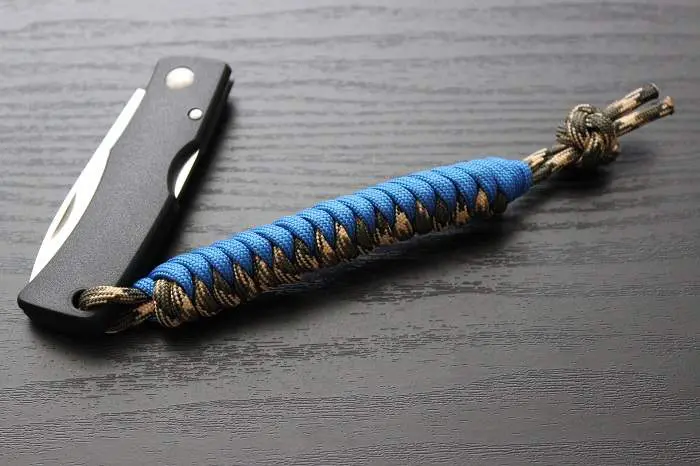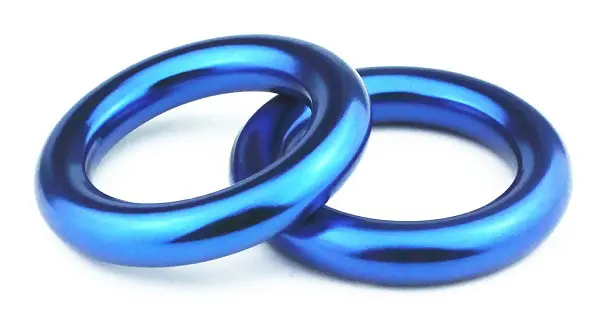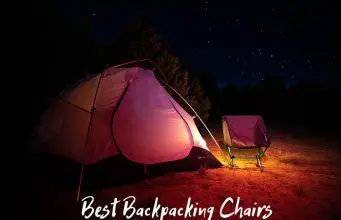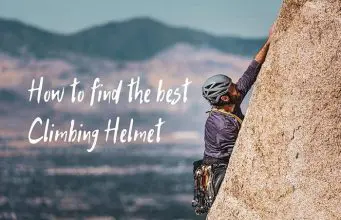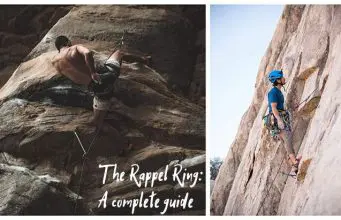What gear do you need for rappelling?
I decided to create this comprehensive rappelling gear list in order to help you out if you’re thinking about starting rappelling but you don’t know exactly what kind of gear to you’ll need.
The basic essential rappelling gear kit includes about 9 items, each with its own key role. I’m talking about a climbing helmet, rappelling gloves, a rappelling harness, hiking pants, rappelling rope, a rappel device, climbing/rappelling shoes, rappel rings, and a knife on a lanyard.
Some of these items will help you perform the actual act of rappelling, while others take on a protective role.
I wouldn’t say that rappelling is the most difficult activity in the world, but it’s definitely not a walk in the park either. It requires quite a bit of stamina, a lot of will, and plenty of courage, but the rewards are unlike anything I’ve ever experienced. That being said, no matter how experienced you are or how confident, you’re only as good as your equipment, which is why wearing a proper set of rappelling gear is a must, each and every time you decide to go out there.
Over the years, I gathered up quite the rappelling gear collection, but as newer and safer products arrived on the market, I realized that my old gear had become obsolete. You see, when it comes to climbing and rappelling, you need every little bit of edge you can get.
For instance, if a new helmet comes out that promises and actually delivers a safer and more comfortable experience, you should probably go ahead and buy it. I’m sure that ten years from now, the risks associated with rappelling will be much lower than they are today, all thanks to these upcoming technologies and innovative designs.
Alright, I think I talked too much about rappelling equipment in general, so maybe it’s time to show you what to include in your basic rappelling gear kit. The list below starts off with the protective essentials, and it works its way down to the others.
1. A climbing helmet.
When buying a climbing helmet, I usually recommend a trip to an actual climbing gear store, and the reason for that is simple: everyone’s head is unique when it comes to size and shape, which is why testing the helmet beforehand is definitely a good idea. What to look for when purchasing a rappelling or climbing helmet? Well, the most important thing is to make sure that your helmet fits nice and tight, as you don’t want it wobbling on your head as you rappel.
In order to test it out, just put the helmet on your head and strap it on as tight as you can without it becoming uncomfortable. Then move your head from left to right, shake it up and down, in order to see if the helmet is moving. You should always strap on your helmet perfectly before a rappel, as you definitely don’t want to mess around with it once you’re hanging on the side off a cliff.
Another thing to consider is the helmet’s breathability. The better the design, the more ventilation it provides, and the cooler your head remains during a rappel. Sometimes, it can take quite a bit of time to rappel properly, and you wouldn’t want to heat up too much or start to sweat profusely. This can become quite distracting, and distractions can ruin your day.
There are many different climbing helmets available, each made out of different materials. Some are lighter than others, some are heavier, and some just look better.
It’s up to you to decide which one suits your needs best, but if you want my personal recommendations, have a look at this complete guide that I put together not too long ago.
2. A durable pair of rappelling gloves.
Rappelling gloves, or rope gloves, are incredibly important because they fulfill two main roles. They keep your hands safe from rope burns, and they make sure that you can grip the rope properly as you descend. They also enhance comfort, which is often an understated aspect of the sport. Your rappelling gloves need to fit perfectly, and they need to provide a perfect balance of breathability and practicality.
There are different types of gloves to choose from and various models, some of which are completely fingerless, while others have just the tips cut off. Then there’s the choice of materials and the different advantages and disadvantages that they bring. Leather rappelling gloves will always be more durable when compared to their synthetic counterparts. They are also heavier and stiffer, and sometimes a bit too snug. However, I’d definitely recommend leather gloves for a beginner since grip and durability trump breathability in my book.
However, if you’re an experienced climber and rappelling enthusiast, and you just practice it recreationally from time to time, a decent pair of breathable synthetic gloves can work just fine. The important thing is to find the pair that works best for you. In order to test them out for a bit, just put them on and clench your fist a few times.
Try to grip a rope if you have one handy, and even pull on it if you can a few times. Obviously, leather gloves need to be broken in for a while, so keep that in mind as well if they seem a bit too tight. If you need more help in picking out a perfect set of rappelling gloves, I’ve written this comprehensive article, which also includes several examples.
3. A comfortable pair of climbing shoes.
Another important piece of your rappelling gear kit comes in the form of climbing shoes or rappelling shoes. Your shoe needs to be as comfortable as possible but also as snug as possible, as you don’t want your foot wobbling around the shoe as you try to stop on the face of a cliff. There are a few things to consider before choosing out the perfect rappelling shoe.
You need to figure out what kind of material you want, what design, and whether you want a unisex shoe or one that was designed specifically for your gender.
- When it comes to materials, unlined leather is my go-to choice, as it is by far the most breathable material available. This means that your feet will receive ample amounts of ventilation as you rappel, which keeps them cooler while preventing odor. That being said, you will need to deodorize your rappelling shoes every now and then, and it just happens that unlined leather is the easiest to clean. One thing to keep in mind, though, is that leather shoes will stretch as you break them in, which means that they might get up to one size larger.
- As an alternative, lined leather shoes are great if you want a product that bridges the gap between leather and synthetic. These shoes are soft on the inside, therefore comfortable, but they’re definitely not as breathable as the unlined leather ones. They will break in and become about half a size larger, which is a bit more bearable, I’ll admit.
- Synthetic shoes I would never recommend, purely because they offer the least amount of breathability. Yes, they do not stretch at all, they don’t need to be broken in, and they’re usually cheaper when compared to leather climbing shoes, but the thought of having sweaty feet on a climb is just a big no-go for me. I will also say that they are incredibly durable, but that’s still not enough to sway me.
Moving on to the different types of rappelling shoes, I think you should go with the ones made specifically for men or women. Unisex shoes try to offer the best of both worlds but generally fail in the attempt. Most of the time, a man’s foot is going to be bigger and have a different shape when compared to a woman’s. Men’s climbing shoes are designed for bigger heels and bigger toes, while women’s are a bit narrower.
Head over to my full guide about climbing shoes if you want to find out more!
4. A decent rappelling harness.
The rappelling harness is one item that actually enables the act of rappelling. It’s an essential piece of rappelling gear that should not be taken lightly. Only the best and most comfortable rappelling harness will do, as rappelling with nothing more than just a rope can be both painful and dangerous.
Climbing harnesses are composed of individual segments, each with its own key role. I always recommend testing your harness at a climbing gym before taking it out in the real world. This is a very important step, so try not to skip on it. As for the harnesses themselves, there are two main manufacturers that I’d endorse any day of the week, and those are Black Diamond and Petzl. I’ve written a comprehensive guide on how to choose your rappelling harness and how to test it out, and I’d be really grateful if you checked it out.
If you want the short version, however, a rappelling harness should be supportive yet comfortable. It should be made out of durable materials, and it should include some extra loops for accessories. If you can find one that ticks all of these boxes, you’re good to go.
5. Rappelling rope.
You won’t go very far rappelling without a good rope, but the good news is that choosing a proper one isn’t incredibly difficult. Rappelling ropes come in different lengths, widths, and they are made from different materials. However, the key thing to remember is that you should always rappel with a static rope instead of a dynamic one. If you don’t have a choice and you absolutely NEED to rappel with a dynamic rope, you technically can do it, just make sure to compensate for the added bounce.
Let me explain: static ropes are designed with very little stretch in mind. That’s because you need to control your descent as much as possible, without having to worry about bouncing around. On the other hand, dynamic ropes are much better suited for climbing, and as such, they are much more flexible under load.
Rope thickness is another thing to take into account. To make sure you always get it right, check the specifications of your rappel/belay device to see what kind of ropes it was designed for. Moreover, thicker ropes are heavier than thinner ones, which could impact the overall weight of your rappelling gear kit. Thicker ropes are also more durable and dependable than thinner ones, though, which means that it’s up to you to find that perfect balance.
If you still need help with choosing the best rappelling rope out there, be sure to check out my detailed guide about ropes.
6. Hiking pants.
You could very well tackle rappelling and climbing using a conventional pair of pants but I wouldn’t recommend it. Hiking pants were designed specifically to offer protection in key areas such as the knees and crotch, and on top of that, they also offer much in the way of practicality.
These pants are usually made out of stretchy yet durable fabric, and they include multiple pockets that you can use to store essentials. Finding the right pair of hiking pants is no easy task, but fortunately for you, I put together a nice little guide that should put you on the right path.
When shopping for hiking pants, always be aware of your own measurements, because there’s nothing worse than a pair of pants that’s tight or loose in all the wrong places. Also, keep in mind that some pairs were designed for cold weather while some are better suited for summer treks. Breathability and moisture-wicking technologies should also be taken into account, as these can make your journey a lot easier.
Oh, and if you’re in the “plus-size” range, I’m working on a special buying guide specifically for you.
7. A dependable belay device.
Rappel devices or belay devices will help you control your descent. That’s quite an important task, right? The thing is, there are about five different belay devices that come to mind just off the top of my head. Even more confusing is that each type of belay device has a different design and works in a different way. They all do pretty much the same thing in the end, but they do it differently.
For rappelling, one of the best belay devices in the world is undoubtedly the ATC Guide by Black Diamond. This sturdy and dependable product represents the go-to choice for countless climbers out there, and for good reason too: the design is impeccable and well-suited for both climbing and rappelling. But I digress.
What does a belay device do? This mechanical piece of climbing equipment controls the rope during the act of belaying. To be more specific, rappelling devices act as a friction brakes. Therefore, in the unfortunate event of a fall with slack in the rope, the fall is brought to a stop quickly. Belay devices are usually attached to the climber’s harness using a sturdy carabiner.
It’s important to note that not all belay devices are used for rappelling. What you want to look for is a passive-assisted belay device, which has no moving parts and can accommodate two strands of ropes. Active-assisted belay devices are definitely not suited for rappelling. If you need help choosing a belay device, I’ve also written a guide on the best belay devices out there. Go check it out if you’re interested!
8. A knife on a lanyard.
Most rappelling blogs will tell you that’s all the equipment you need to start out. They’re not wrong I suppose, as you can definitely get by with just the items that I described above. However, I decided to add an extra little tip in here, one that has helped me out quite a bit when I found myself in a bind.
A knife on a lanyard can be a true life-saver if things don’t go according to plan. More importantly, the lanyard prevents you from dropping the blade, and it just makes it easier to grab it from your pocket. Most people wear the lanyard around their necks or attached to their belts.
You can also wear it around your wrist, but that would probably get in the way too much so I wouldn’t recommend it. If you do decide to add a knife on a lanyard to your basic rappelling kit, make sure to use a small knife that won’t get in your way too much.
9. A high-quality rappel ring.
While it’s definitely not a good idea to actually rappel using a rappelling ring, this piece of climbing gear does play its own important role, as it’s often used to build anchors. The rings are designed to cause as little rope tear as possible, and they’re manufactured using durable materials such as steel or aluminum alloy.
I’ve already put together a decent guide that tells you everything you need to know about rap rings. You’ll also find some good suggestions on what kind of rappel ring you should buy and how long to use it before you should consider replacing it.
Conclusion.
A standard rappelling equipment set includes eight items, but you can easily go up to ten if you include a knife and a set of knee pads or elbow pads. Because I don’t think they are absolutely essential, I didn’t include these last ones on the list, but that doesn’t mean that you shouldn’t wear them if you feel that you need some extra protection.
Rappelling is often practiced as a last resort, or because the climber has no other alternative to reach the ground safely after ascending. That doesn’t mean that it has to be a scary or uncomfortable experience. If you’re looking for rappelling gear for beginners, or if you’re just wondering where you can get a rappelling gear starter kit, you can definitely rely on the examples I presented above.
Picking the right set of gear can go a long way towards ensuring the success of your rappelling endeavor. If you have any further questions or you would like to share your own thoughts about this subject, feel free to get in touch!


